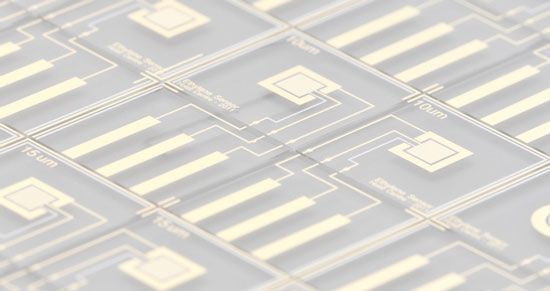| Dec 16, 2011 |
Demonstrating the versatility of electrochemical sensors
|
|
(Nanowerk News) Imec and Holst Centre have demonstrated two new electrochemical sensors. A miniature ethylene sensor could help monitor and control fruit ripening, potentially reducing food wastage. And a multi-ion sweat sensor could allow continuous monitoring of dehydration for athletes, the elderly and the sick. These sensors enable considerable miniaturization in monitoring equipment, opening the door to novel smart packaging and body area network (BAN) applications.
|
|
Ethylene sensor for fruit ripening
|
|
Ethylene is a gaseous plant hormone. Ripe fruit gives off ethylene, and many fruits ripen faster when exposed to it. Fruit producers use high concentrations of ethylene to ripen fruit in the warehouse so it is ready to eat when it reaches consumers. Inexpensive, accurate ethylene sensors would enable better control of that process. It would also allow retailers to avoid wastage by monitoring fruit ripeness.
|
 |
| Ethylene sensor on glass.
|
|
Today's ethylene detection systems are lab-scale, expensive table-top devices, limiting their usefulness in fruit distribution and retail. The new ethylene sensor, developed by imec and Holst Centre, offers the same functionality in a single chip. To achieve this, the researchers have created a novel electrochemical cell based on an ionic liquid. Because ionic liquids cannot evaporate at room temperatures, they can be used in very thin layers in the cell. This means the cell – and hence the entire sensor – can be much smaller while delivering the same performance.
|
|
A first-generation prototype of this sensor detects ethylene down to 1 part per million (ppm), with a linear response up to 10ppm – the kind of concentrations typically used to ripen fruit artificially. Imec and Holst Centre recently produced a second-generation prototype on an inexpensive, flexible substrate, paving the way for use in smart packaging. Work is continuing to further miniaturize the sensor, to extend its sensitivity to sub-ppm for monitoring natural ripening, and to test it in real-life fruit storage and transportation conditions.
|
|
The ethylene sensor uses an electrochemical sensing mechanism. A voltage is applied between a gold electrode and a reference electrode. At the electrode surface, the ethylene is oxidized, which means that electrons are transferred from molecules in the ionic liquid to the electrode, resulting in a current. The magnitude of this current scales with the ethylene concentration in the gas phase.
|
|
Sweat monitoring
|
|
Sweat can tell us a lot about our physical condition. Measuring its acidity and the concentration of various ions gives information about a person's dehydration and electrolyte levels. However, existing solutions are bulky and only sensitive to one type of ion, making them unsuitable for monitoring a person's condition.
|
|
Different ions in sweat can be detected using electrochemical sensors that have electrodes made of different materials. Using nanotechnology and micro-fabrication techniques, the imec and Holst Centre team was able to greatly reduce the size of these electrodes. This makes it possible to combine multiple electrodes onto one chip, and hence measure multiple ion concentrations with a single device.
|
|
To demonstrate the concept, the team created a combined acidity / chloride sensor complete with integrated wireless module, allowing the sensor output to be read out on a remote unit. The whole system is small enough to fit into a handheld device. Further size reductions are possible, leading to sweat sensors that are small enough to be integrated into an on-body patch as part of a body area network (BAN). The team is also investigating ways to channel sweat from the body to the sensor electrodes to enable continuous monitoring.
|
|
Such a system would allow real-time monitoring of dehydration and electrolyte levels, helping people to balance their intake of fluid and salt. This kind of information would be useful for athletes who want to train and perform at peak levels, as well as in the care of the elderly, small children and people suffering from fever and diarrhea – all of whom can become easily dehydrated.
|
|
The sweat sensor also makes use of electrochemical sensing. It exploits so-called ion-selective electrodes, which generate a voltage with respect to a reference electrode that solely depends on the ion concentration of interest.
|

